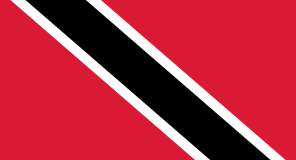Trinidad & Tobago
Green Hydrogen Vision
Trinidad and Tobago envision a transformative energy future where green hydrogen becomes a cornerstone of its economy, driving decarbonisation and sustainable growth. Leveraging its existing petrochemical expertise, renewable energy potential, and strategic location, the country aims to transition from grey to green hydrogen, creating opportunities for global exports of green ammonia and methanol. With a focus on innovation, job creation, and energy leadership, Trinidad and Tobago aspires to position itself as a regional hub for green hydrogen production, storage, and trade, contributing to global climate goals.
National Strategy
Trinidad and Tobago’s 2022 Green Hydrogen strategy aim to leverage its existing oil and gas infrastructure, operational expertise, and renewable energy potential to transition into a green hydrogen economy. The roadmap focuses on integrating green hydrogen into the petrochemical sector, creating export opportunities for green ammonia and methanol, and positioning the country as a regional hub for hydrogen production, storage, and trade. This strategy aligns with global decarbonisation goals and seeks to enhance economic sustainability.
Capacity Targets
-
Renewable Energy Development: By 2065, the country plans to install 57 GW of offshore wind capacity, producing 25 GW of electricity for green hydrogen production.
-
Green Hydrogen Production: Targeting 4 million tonnes of green hydrogen per annum (Mtpa) by 2065, with 1.5 Mtpa allocated to existing ammonia and methanol markets.
-
Initial phases include small-scale renewable energy projects and electrolysers to lay the foundation for larger capacity in the long term.
Impact Targets
-
Decarbonisation: Transition from grey hydrogen to green hydrogen, significantly reducing carbon emissions in the petrochemical industry.
-
Economic Growth: Generate billions in economic benefits and create thousands of constructions, operations, and maintenance jobs.
-
Export Leadership: Strengthen the country’s position as a leader in green ammonia and methanol exports, capitalising on global demand for green products.
Policy Spotlight
The Ministry of Energy and Energy Industries announced the successful installation of LiDAR devices in Orange Valley and Galeota, Trinidad and Tobago in November 2024. These devices will collect wind data up to international standards for 12 to 18 months as part of the onshore ‘Wind Resource Assessment Programme (WRAP),’ a key part of a renewable energy initiative that allows Trinidad and Tobago to take initial steps toward wind energy implementation. Honourable Stuart R. Young SC MP, Minister of Energy and Energy Industries, remarked that this development is significant for renewable energy as the nation aims for a 30% ‘Renewable Generation’ target. Wind energy is set to support the future Green Hydrogen Industry. The WRAP plans to extend to three additional sites in 2025, with the government actively pursuing investors and developers.
Financing
-
Funding Sources: Includes climate finance, carbon markets, private sector investments, and national financing mechanisms.
-
Incentives: Fiscal incentives, government grants, and partnerships are proposed to attract international investments and develop local supply chains.
-
Demonstration Projects: Pilot programs funded through public and private initiatives to test green hydrogen applications in petrochemicals, transportation, and cement manufacturing.
Government Green Hydrogen Lead
The Ministry of Energy and Energy Industries (MEEI) oversees the implementation of the green hydrogen roadmap in collaboration with the National Energy Corporation of Trinidad and Tobago and the Inter-American Development Bank (IDB).
